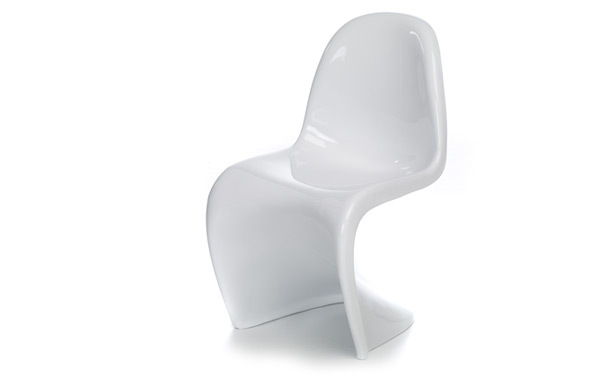Verner Panton
13th February 1926 – 5th September 1998
Lucky for the design world, Panton and his straight-out-of-“The Jetsons” creations were real.
Verner Panton couldn’t paint or draw, but he could dream. And like the rest of the creative community in the 50s and 60s, his dreams focused on the infinite possibilities of the future. Training under Danish architecture titan Arne Jacobsen, he was inspired by his mentor’s obsession with new materials and technologies. For the unrelentingly sunny Panton (what other designer names his dog “Happy”?), those technologies held the key to shaking up a populace “mortally afraid of using colour”.
Armed with this dream and a Volkswagen van he somehow transformed into a studio, Panton began the process of creating Pop Art people could sit on. The Bachelor and Tivoli chairs entered mass production first. But it wasn’t until the introduction of the Cone Chair that he became a true design world rock star. The oddly-shaped seat drew such large crowds to a New York City window display that the cops had to be called in. Suddenly, the swingin’ ‘60s had a designer to match.
Now officially a visionary, Panton was free to turn the rest of his wildest dreams into reality. Since his stated goal was “to provoke people into using their imagination,” that meant developing the first-ever inflatable furniture, the “Flying Chair” and a series of fantastical “total environments” combining pattern, colour and design.
At the dawn of the ‘70s, Panton introduced his most singular achievement, the Luron S, known to the rest of the world as the Panton Chair. The first cantilevered chair molded from a single piece of plastic, the sleek, sexy seat became 1970’s first “it chair”, featured in fashion spreads and fashionable homes around the world.
Of course, while his most famous creations provide a stylish space for one’s bum, Panton’s achievements stretch well beyond his iconic chairs. His geometrically patterned textiles are instantly recognisable, and his other work includes lamps, watches, clothes, accessories and even a self-assembly weekend home.
Incredibly, Panton’s enduring designs are as fresh and inspiring today, in the future he envisioned, as they were when first introduced a half-century ago.

